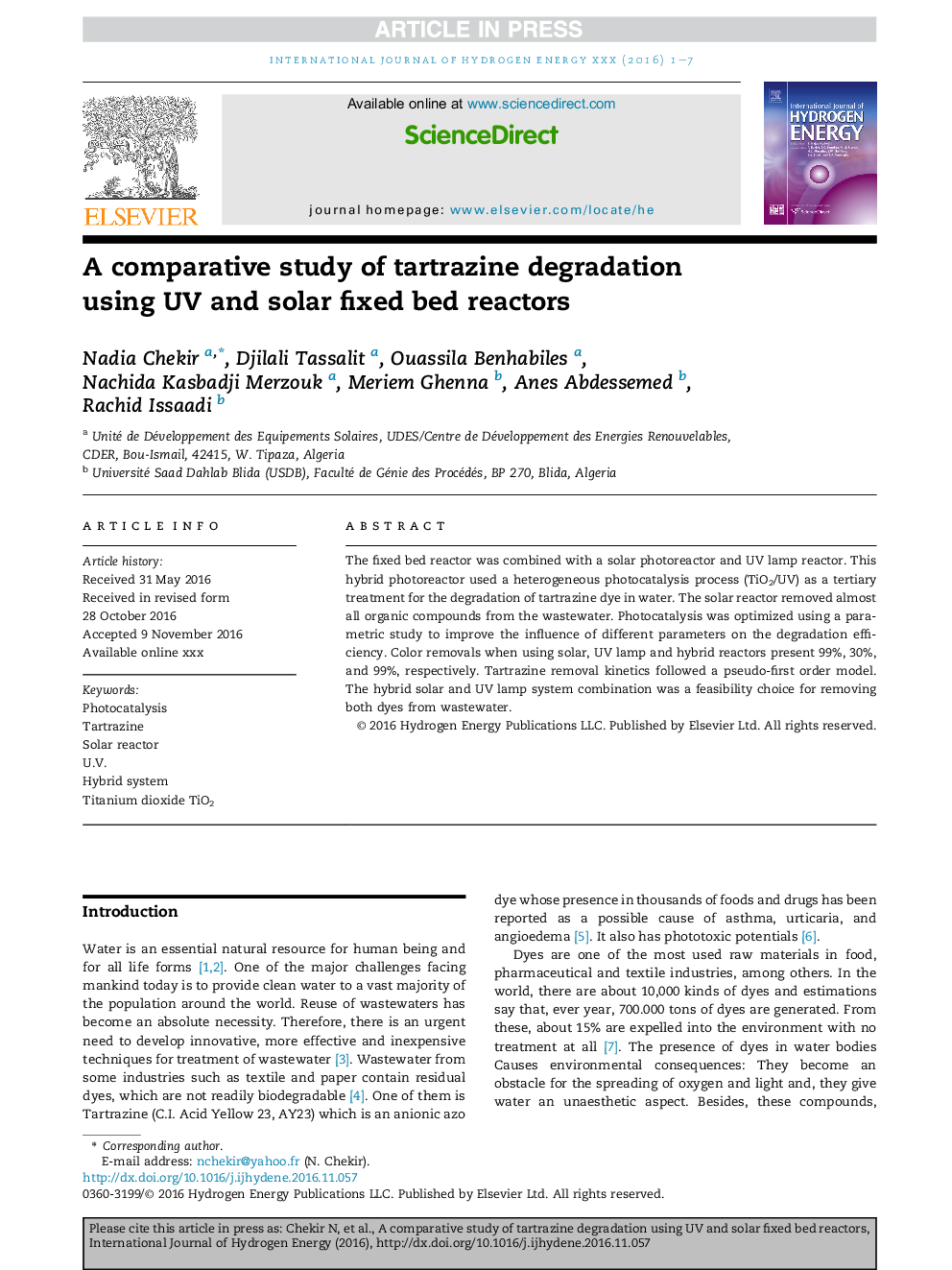| Article ID | Journal | Published Year | Pages | File Type |
|---|---|---|---|---|
| 5148053 | International Journal of Hydrogen Energy | 2017 | 7 Pages |
Abstract
The fixed bed reactor was combined with a solar photoreactor and UV lamp reactor. This hybrid photoreactor used a heterogeneous photocatalysis process (TiO2/UV) as a tertiary treatment for the degradation of tartrazine dye in water. The solar reactor removed almost all organic compounds from the wastewater. Photocatalysis was optimized using a parametric study to improve the influence of different parameters on the degradation efficiency. Color removals when using solar, UV lamp and hybrid reactors present 99%, 30%, and 99%, respectively. Tartrazine removal kinetics followed a pseudo-first order model. The hybrid solar and UV lamp system combination was a feasibility choice for removing both dyes from wastewater.
Related Topics
Physical Sciences and Engineering
Chemistry
Electrochemistry
Authors
Nadia Chekir, Djilali Tassalit, Ouassila Benhabiles, Nachida Kasbadji Merzouk, Meriem Ghenna, Anes Abdessemed, Rachid Issaadi,
